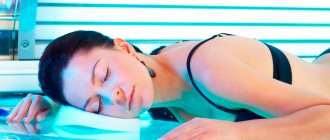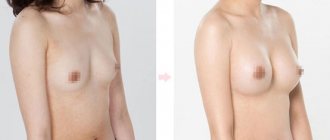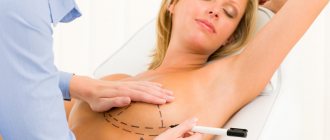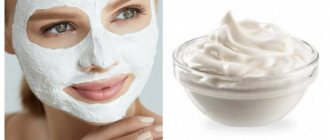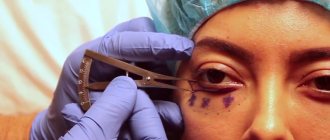Stages of rehabilitation
Carrying out mammoplasty is a fairly serious surgical intervention, performed under general anesthesia, accompanied by tissue incisions and trauma when placing implants, followed by suturing. Therefore, the rehabilitation process takes place in stages, with certain restrictions and prohibitions over several days or weeks. The patient needs to strictly monitor her general well-being, monitor the condition of the postoperative scar and follow all the recommendations of the plastic surgeon. This is necessary so that expectations regarding the desired shape and size of the breast are met, and the recovery process goes according to plan.
In general, the first (postoperative) rehabilitation period lasts up to two months, full recovery occurs within 6-12 months.
What is mammoplasty and why is it needed?
Mammoplasty is a plastic surgery that changes the size and shape of the mammary gland or, simply put, it is a reduction or enlargement of the breast. This operation is performed in the presence of congenital anatomical defects of the mammary glands, sagging breasts, and violation of its shape.
The operation is performed in one of 3 ways, namely:
- an incision is made around the nipple area;
- an incision is made under the mammary gland;
- incision in the armpit.
Based on the initial condition of the breast, the surgeon determines the location where the implant will be located. The operation is performed under general anesthesia for 1-2.5 hours. The rehabilitation period depends on the type of plastic surgery. Usually this is about 10 days.
After 5-7 days, as a rule, the stitches are removed. After this, the patient can immediately return to his normal life, but physical activity is contraindicated. They should be started no earlier than in one to one and a half months.
Rehabilitation after mammoplasty by day
The patient spends the first day after the operation in the ward under the supervision of a doctor and nurses, recovering from anesthesia. An increase in temperature is possible as a reaction to incisions and tissue injury, pain. Antipyretics, painkillers, and antibiotics may be recommended to prevent wound infection. After the operation, a semi-lying or sitting position is required; by the end of the day you can stand up and walk. You can drink 3-4 hours after anesthesia, eat food after 5-6 hours.
On the second day, the doctor conducts an examination, removes drainages and makes dressings. In some clinics, the patient is allowed to go home by the end of the second or third day with positive dynamics of recovery.
The patient remains at home for the third or fourth day. Physical activity is prohibited; walking around the house is acceptable.
On the fifth day, a visit to the clinic is required for a follow-up examination by a surgeon and assessment of the recovery process, dressing, and suture treatment.
From 6 to 11 days after surgery, there is a smooth return to normal life with a number of restrictions. Physical activity, sports and heavy lifting are prohibited.
On the 12th day, the doctor conducts an examination again, monitoring the process of restoration of breast tissue and postoperative suture. The next visit during the normal rehabilitation process is planned for the 6th week from the date of surgery.
In the second or third week after the intervention, light housework is allowed; after the doctor’s permission, you can start training after about a month.
Useful video
Watch this video about the features of recovery after mammoplasty:
Similar articles
- Sleeping on your side after mammoplasty: is it possible and when
? Such a favorite position by many, like sleeping on your side, is extremely undesirable after mammoplasty. Otherwise there may be unpleasant consequences. When can I return to my favorite position? Read more - Mammoplasty: rehabilitation after implantation...
Breast enlargement by finding a good doctor is half the battle. If successful mammoplasty is performed, rehabilitation plays an important role. Without following the rules during the rehabilitation period, reduction mammoplasty will bring disappointment. Read more
- Sports after mammoplasty: when can you start?
Sports after mammoplasty are initially prohibited in any form. Only after 3 months can light loads be introduced. What is possible and what is not? Read more
- Mammoplasty: complications after surgery
Mammoplasty can make a bust more voluminous or correct the errors of nature, complications after which can nullify all efforts. How to avoid becoming a sad statistic after surgery? What are the possible complications? Read more
Dynamics of changes in the breast during the recovery period
In the first month after surgery, the breasts are quite painful, the tissues swell, and the breast size may be larger than expected. Bruising and small hematomas may appear in the area of the mammary glands. Women are concerned about how long breast swelling lasts after surgery. Maximum swelling will occur in the first week; within 2-3 weeks all these changes will subside. The pain will be maximum in the first days; painkillers are used to eliminate it. Gradually, the intensity of pain decreases by 2-3 weeks, and the need for medications disappears.
In the first two months, the breasts will be somewhat unnaturally raised; by the end of the second month, the implants will completely take root, take their proper place, tissue swelling will go away, and the shape of the breast will become natural. Breast tissue restoration takes place throughout the first year after the intervention. There may be problems with sensitivity of the halos and nipple, burning or itching of the skin. These problems are acceptable and disappear by the end of the first or beginning of the second year.
When is it allowed to sunbathe on the beach or in a solarium after surgery?
How long after mammoplasty can I visit a solarium or sunbathe on the beach?
Each person’s body is individual and only a doctor can determine the optimal time for tanning.
There are general recommendations:
- Sunbathing is strictly prohibited for three months after surgery. During this period, the body adapts to the new shape of the breast, and also tries to restore the affected cells, therefore any thermal exposure is contraindicated.
- Postoperative scars remain for 5 months. If you tan earlier, they may darken and heal improperly. In addition, the risk of sunburn at the skin incision sites increases.
- Only after a year is complete healing of the scars and restoration of the body after the operation observed. After doctors' permission, you can safely sunbathe on the beach using a swimsuit and sunscreen.
It is also interesting what lamps are used in solariums, types of lamps, their features
Rehabilitation period
During the rehabilitation period, medications are prescribed to accelerate wound healing. These are mainly antibacterial drugs, antiseptics, painkillers, and antiviral agents.
In addition, you need to properly care for your breasts to speed up the healing of sutures. It is recommended to wear special shapewear, change bandages, apply ointments and do a light massage. After the stitches are removed, moisturizing ointments are prescribed to restore the skin. The most important thing is to strictly follow all doctor’s recommendations to avoid complications in the future.
When is sunbathing allowed?
When can I go to the solarium after mammoplasty?
It all depends on the individual characteristics of a particular organism.
In this case, you should know general things about mammoplasty:
- Sunbathing is strictly prohibited in the first three months of the rehabilitation period. During this period, regeneration of damaged cells occurs, therefore any ultraviolet exposure is contraindicated. After this period, if the scar healing process has ended, the specialist may allow short tanning sessions using special breast pads.
- For 5 months after the operation, the scars have a red tint; the skin in this area is very sensitive to any impact. Therefore, if you sunbathe, you can get not only sunburn, but also darkening of the scars.
- Only a year after the operation, the skin at the site of the scars is completely restored and you can sunbathe, but with the permission of the doctor.
Rules for tanning after mammoplasty
If there were no complications after the operation, the scars have a natural pink tint and are practically invisible, then you can start sunbathing, following the following rules:
- For an even tan without sunburn, you must use high-quality sunscreen cosmetics with a factor of 50 to 100.
- The chest must be protected with underwear or special pads that reflect ultraviolet rays.
- You can sunbathe only in the morning or evening hours. In the solarium you need to start with 5 minutes and no more than twice a week.
- After tanning, apply moisturizing and restorative products to the skin.
It is also interesting: Is it possible to combine a solarium and a sauna, or visit the sauna before or after the solarium?
What to pay attention to during the rehabilitation period
There are a number of warning signs, the appearance of which is a reason for immediate consultation with a doctor. The first thing that needs to be monitored is the condition of the postoperative wound and the process of scar formation. It is important to notify your doctor immediately if:
- increased pain in the area of the stitches or inside the chest;
- discharge appeared from the nipple area - green, yellowish, bloody, with an odor;
- the breast is swollen, hard to the touch, painful, sharply increased in size;
- parts of the implant are felt, they move, causing discomfort;
- the sutures become wet and fluid or blood oozes out;
- nipples itch and itch, have lost sensitivity;
- breasts are visually different sizes, asymmetrical.
It is important to monitor your general condition if you feel unwell, have a fever, headache, or nausea. Any signs of malaise, discomfort and other complaints are a reason for an immediate visit to the doctor.
Why do breasts hurt after mammoplasty and how to alleviate your condition?
Any surgical intervention, including the installation of implants, is accompanied by unpleasant sensations. They are especially pronounced in the first days after surgery.
Pain after mammoplasty is an inevitable reaction of our body to tissue damage: it needs time to recover and adapt to the foreign body (endoprosthesis). Most often, discomfort is concentrated in the chest or nipples; normally, they last up to 2-3 weeks, but they are the most unpleasant in the first few days.
What can a patient do to alleviate his condition as much as possible during this difficult period? What symptoms should be monitored especially carefully and why you should not lose contact with your doctor - TecRussia.ru discusses these pressing issues with our permanent expert, plastic surgeon Ilya Sergeev from the DoctorPlastic clinic:
↑ Why does chest pain occur, what is it like and how long does it last?
Most often, patients describe their sensations after mammoplasty as a burning sensation, squeezing in the pectoral muscles. This is an absolutely normal consequence of surgery, it is due to the fact that:
- When forming a “pocket” for implant installation, surrounding tissues are damaged. In addition, the endoprosthesis itself can also shift and/or compress them.
- The skin becomes deformed and stretched - this also causes negative sensations.
- In the first few days after mammoplasty, swelling is inevitable, which further increases the discomfort and feeling of fullness.
Sergeev Ilya Vyacheslavovich Plastic surgeon, Candidate of Medical Sciences, leading specialist in breast plastic surgery at the DoctorPlastic clinic
– Implants are most often placed under the pectoral muscle, its detachment is carried out - mainly due to this, a certain soreness occurs. There is nothing to be afraid of here: most of my patients compare the sensations with what happens the next day after an intense workout in the gym: unpleasant, but absolutely tolerable. As a rule, noticeable improvement occurs within 3-4 days, when the swelling begins to subside.
However, there are cases when the pain feels sharp, shooting, and the general condition requires the use of analgesics and lasts longer than a week. The reason may be:
- Threshold of pain sensitivity. The lower it is, the more difficult it will be in the first days after surgery. With a high threshold, the recovery period is easier, and the discomfort is moderate and disappears in a short time.
- Method of placing endoprostheses during breast augmentation. The most traumatic is under the muscle, since it is associated with damage to the greatest amount of tissue.
- Implant size. The dependence is direct - the larger they are, the stronger the pressure around them, which means the pain will be more pronounced.
- Before/after birth. There is no scientific evidence for this, but in practice, surgeons note that women who have given birth are less likely to complain of discomfort after surgery and recover faster.
- Complications. Infection, displacement of implants, the formation of large hematomas and other undesirable consequences of breast surgery can lead to a sharp increase in pain.
↑ Why do my back and stitches ache?
Immediately after the operation, pulsating and twitching sensations are concentrated, as a rule, in the area of tissue dissection. But subsequently their character and localization change. The pain can become burning, pulling, bursting, bother both during physical activity and during rest, and also occur in uncharacteristic places:
- In the area of the ribs. The cause of such localization is often damage or compression of the intercostal nerves - if a large endoprosthesis is installed or swelling has developed in the area of the pectoral muscles. At the peak of inspiration, the pain usually increases as the expanding lungs irritate the pinched nerve processes.
- In back. Discomfort in this area may result from damage to the nerve cells that innervate the chest muscles and interact with the vertebrae, as well as the result of increased weight of the mammary glands, which the patient still has to get used to. But most often such pain occurs as a result of inactivity during rehabilitation.
Sergeev Ilya Vyacheslavovich Plastic surgeon, Candidate of Medical Sciences, leading specialist in breast plastic surgery at the DoctorPlastic clinic
– In most cases, the back hurts because girls lie down a lot during the postoperative period. This gives a static load, resulting in obvious discomfort after 2-3 days. The operation itself has nothing to do with it.
- In the seam area. If drainage was installed in the first days after plastic surgery, unpleasant pulling or stabbing sensations may occur. The cause of increased pain is most often premature physical injuries, which provoke tension on the edges of the wound and can lead to its divergence, as well as infection (see also the article “Why do scars hurt after surgery and what to do about it”).
- In the nipple area. It contains a large number of nerve endings - most often their damage during the areolar approach leads to severe pain. For the same reason, the opposite effect is possible - complete or partial loss of sensitivity.
↑ How long will you have to endure?
If mammoplasty was performed successfully and without complications, initial rehabilitation after it takes about a month. Normally, during this period most of the unpleasant symptoms completely disappear:
| Time after breast augmentation | Feel |
| 1st day | On the day of the operation, the pain practically does not bother the patient - the effect of anesthesia affects it. |
| 2-4 days | The most difficult time. There are different sensations: boring, burning, bursting, shooting, etc. Their intensity depends on the individual characteristics of the body and the presence of provoking factors, which we have already discussed above. |
| 1-2 weeks | The severity of the pain subsides, it becomes easily bearable, and for some it goes away completely. Typically, discomfort occurs only with awkward movements, taking an awkward position, or if the compression garment is incorrectly selected. |
| 1 month | By this time, there should be no discomfort left. An exception is violations of nipple sensitivity; they sometimes persist for up to six months or even longer. |
- Complications after breast surgery: causes and treatment
- Repeated mammoplasty: how and why such operations are performed
↑ How to deal with pain?
In the first days after breast augmentation or other breast surgery, the patient is usually prescribed analgesics or NSAIDs, which additionally have anti-inflammatory and anti-edematous effects. The doctor selects the type of drug and its dosage individually, taking into account the woman’s condition and age, the severity of pain, and drug tolerance. Most often these are Ketanol, Ketanov, Diclofenac or Dexalgin.
- Important! Selecting such drugs on your own is strictly prohibited. Prescribing an analgesic is the prerogative of the surgeon.
You can further relieve discomfort by doing the following:
- Always wear compression hosiery, correctly selected in size: such underwear effectively supports the glands and prevents the spread of swelling.
- Regularly care for your stitches, avoiding getting them wet, irritated, damaged or over-tensioned.
- Follow all doctor's recommendations during the rehabilitation period. It is important, on the one hand, to maintain moderate physical activity, and on the other hand, not to overdo it (for example, sharp bends and raising your arms up are undesirable).
It is not recommended to use a hot shower, cold or warm compresses, or massage the gland area to relieve the condition. Such actions can lead to additional tissue injury, disruption of the integrity of the sutures, and infection.
Sergeev Ilya Vyacheslavovich Plastic surgeon, Candidate of Medical Sciences, leading specialist in breast plastic surgery at the DoctorPlastic clinic
– Painkillers are normal in the first few days, but you don’t need to get too carried away with them. The main thing I advise all my patients is not to linger. You definitely need to move, walk, and generally try to lead your normal life, albeit with temporary restrictions on activity.
↑ If something went wrong...
Moderate pain in the first days after breast surgery is normal, but it is extremely important to monitor the dynamics and monitor the condition of your body so as not to miss complications. Their main features:
- general or local increase in body temperature, as well as the presence of low-grade fever that persists for 2 weeks or more;
- signs of intoxication: nausea, vomiting, severe weakness, blood pressure disorders, etc.;
- redness, enlargement, thickening, deformation and other obvious changes in the condition of the mammary gland.
You should consult a doctor immediately if:
- Discomfort is present only in one breast, which has noticeably increased in size. Especially if this happens in the early recovery period. Most likely, the reason is a growing hematoma; under no circumstances should you tolerate or try to ignore this.
- The pain subsided almost or completely, and then returned 1-3 weeks after surgery (especially if accompanied by redness and/or swelling). Perhaps an infection got inside and an inflammatory process began.
What not to do after mammoplasty
After the operation, there are a number of restrictions that are gradually weakened as tissues are restored and postoperative scars heal.
You should not drink liquids for the first 3 hours after surgery (vomiting may occur), and you should not eat food for the first 5-6 hours.
For 4-5 days you should not shower your entire body (you can wash your lower part, wipe your hands, neck, and face with a damp towel).
In the first week, you should not lie down, sleep on your stomach at night, raise your arms above shoulder level, lift more than 1 kg of weight, make sudden movements with your arms, or bend forward and down.
Until the end of 2 weeks after the operation, you cannot drive a car or have sex. Until the end of the first year of rehabilitation after mammoplasty, pregnancy is undesirable - you should take care of contraception.
For a month after the operation, physical activity, sports and training are prohibited. Exercises with push-ups and stretching of the pectoral muscles are carried out no earlier than 24-25 weeks after surgery.
During the entire rehabilitation period, you should avoid sudden weight fluctuations, serious stress and nervous strain, and anxiety.
In the first three months, you should stop drinking alcohol and smoking, limit spicy, salty, spiced, fatty and fried foods. It is important to control fluid intake to avoid swelling.
For at least 6 months, you should avoid visiting saunas, steam baths, solariums, prolonged exposure to the sun, and taking hot baths.
Tips for safe tanning
If the doctor gives the go-ahead and you decide to sunbathe in a solarium or in the sun after mammoplasty, then you need to follow certain rules.
You may be interested in reading this article: Is it possible to sunbathe in the sun and in a solarium after biorevitalization?
You should strictly follow the following recommendations if you want to avoid sad consequences and look 100%:
- It is necessary to take with you a cream with an ultraviolet protection level of at least 35 units. This won't make your tan worse. The cream will help protect the mammary glands from the most negative and most active influences.
- When basking in the sun, it is best to cover your chest with a towel.
- The swimsuit must be made of natural fabric.
- For those who like to sunbathe topless, you should definitely use silicone stickers. But sunbathing this way is highly not recommended!
- The duration of exposure to the sun or solarium should not be long, this will help prevent overheating of the implants. No more than half an hour in the sun! It will be better if you stay under the sun intermittently.
- The best time for sunbathing outdoors is either before 10 am or after 16:00. At such times, the sun's rays are less harmful.
Recommendations for the recovery period
Rehabilitation requires compliance with several rules; this will help to avoid common complications that arise due to insufficient scrupulousness of patients. During this period it is necessary:
- wear compression garments (it supports the breasts, ensures the correct shape, and prevents the seams from coming apart). For the first month, underwear must be worn without taking off;
- do not raise your arms up until the tissues have fused (otherwise the seams will come apart);
- sleep strictly on your back for the first week, then for 2-3 months on your back or side (but not on your stomach);
- minimize the load on the shoulder girdle in the first 3 months. Lifting a load of more than 1 kg is strictly not recommended. Then gradually load your hands;
- use special creams that accelerate healing (Actovegin), and resorption of keloid scars (Contractubex), silicone patch (Meliform), as well as products that maintain skin elasticity (these are recommended by the doctor). This will make post-operative scars almost invisible;
- give up alcohol and smoking.
The surgeon must give detailed recommendations for the postoperative period. If you are experiencing severe pain, it seems to you that the shape of the mammary glands does not meet your expectations (severe swelling, double folds, ripples have appeared), the tissue in the suture area is swollen, consult your doctor, and do not look for an answer on the forum. Perhaps the healing process is not going well or the implant has moved. In this case, a doctor's advice and his direct intervention will be required.
FAQ
Should you continue training if pain occurs?
During exercise, especially in the early stages after surgery, the patient may experience pain. This is due to the fact that the muscles have not yet reached the proper tone. You can continue classes.
In this case, you need to give up exercises that cause pain for a while, or reduce their intensity.
If the patient experiences excessive discomfort and severe pain, it is better to completely stop training for a certain period and see a doctor.
Antibiotics
If your surgeon recommends taking antibiotics during surgery, take his advice to reduce not only the risk of infection, but also the potential for membrane formation.
The strangest thing about capsular contracture is that it often occurs on only one breast. It is difficult to understand why one breast is soft and the other becomes hard if the same surgeon placed the same implants on both breasts in the same patient at the same time. Publications on the topic:
- Capsular contracture. Signs, causes and risks
- Is it necessary to massage implants after surgery…
- Breast implant placement sites. Advantages and disadvantages
- Reducing the risk of capsular contracture
- What is the best way to place the implant: under the muscle or under the gland?
- Inframammary incision. Advantages and disadvantages
The cause of capsular contracture is unknown
The truth is that capsular contracture is the mystery of breast plastic surgery. It is generally accepted that blood remains in the pocket around the implant due to excessive bleeding, which increases the risk of shell formation. For this reason, doctors strongly recommend that you stop taking any blood thinning medications two weeks before surgery to reduce the risk of bleeding during and after surgery. Such drugs include aspirin, vitamin E, ibuprofen, Advil and other anti-inflammatory drugs, as well as herbal drugs.
Tips for women who have undergone mammoplasty
Modern manufacturers provide a lifetime warranty on implants. But so that they really do not require replacement, you should follow a few tips:
- Use masks, lotions and creams to maintain the elasticity of the breast skin (algae, alginate), serums with collagen and elastin.
- Do breast massage.
- Don't get carried away with the solarium.
- See your doctor regularly.
- Avoid injury to the chest area.
Already saying goodbye to readers, we draw attention to the fact that patients with a large scar under the breast may experience discomfort in this area when wearing underwear (especially with underwires). Unless otherwise advised by your doctor, you can use an elastic bandage to protect damaged tissue. Over time, the bra will stop rubbing this area. Visit our website and share information with friends. May your life be full of joy.
Compression underwear
You have probably seen more than once that in the postoperative period after breast augmentation, women always wear special compression garments. Moreover, it is recommended to put it on immediately after the first dressing (it is at this time that the elastic bandages are removed, which not only secure the breasts, but also fight swelling). If such underwear is really of high quality, and it is chosen correctly for you, then the recovery process will be shortened by a couple of weeks. The underwear has an amazing effect on the tissue, since it contains elastane, which not only perfectly supports the mammary glands, but also does not compress them. More specifically, here are the functions of compression garments:
- breast support;
- elimination of swelling;
- preventing seams from coming apart;
- giving the breast the desired shape.
And, of course, we should not forget that constant fixation will improve metabolism, as a result of which the tissues will begin to regenerate faster and the wounds will tighten. By the way, you need to wear compression garments on your chest after surgery for the first month around the clock, and after that you can only wear them during the day and during physical activity. As for the choice of regular underwear, during the first year preference should be given to simple bras that secure the breasts well (they can only be worn after a doctor’s permission). It is also desirable that they have wide straps and a thick base.
